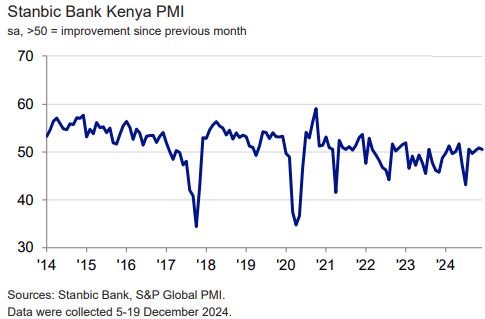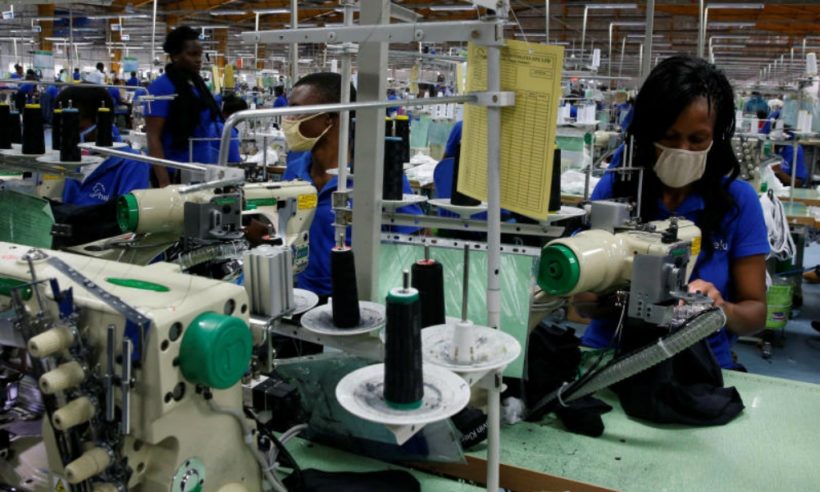Kenya’s private sector ended 2024 with marginal growth, as the Stanbic Bank Kenya Purchasing Managers’ Index (PMI) registered a reading of 50.6 in December, slightly down from 50.9 in November.
This marked the third consecutive month above the 50.0 neutral threshold, indicating modest improvement in business conditions despite mounting cost pressures.

The PMI report highlighted a surge in input costs, prompting firms to increase selling prices at the fastest rate since December 2023.
Currency weakness, higher taxes, and robust demand contributed to this inflationary trend. Agriculture and manufacturing sectors experienced the steepest input and output price increases.
Business activity expanded for the third straight month, driven by rising new orders and improved purchasing power among customers. However, the pace of growth in new orders slowed compared to November.
Input buying rose for the fifth consecutive month, marking its sharpest increase since September 2022, as firms worked to meet demand.
Despite these gains, private sector optimism for 2025 remains subdued. Only 5 per cent of surveyed firms expect output growth in the next 12 months, citing planned business expansions and new product launches.
Employment growth was minimal, with staffing increases limited to the agriculture sector.
The report also noted a decline in inventories for the first time in five months, as firms reduced stock levels to avoid wastage. Backlogs of work fell for the second time in three months, indicating spare capacity despite sales growth.
While the private sector showed resilience, weak business confidence and rising costs underscore challenges ahead for Kenya’s economy in 2025.
Attribution: Amwal Al Ghad English
Subediting: Y.Yasser



